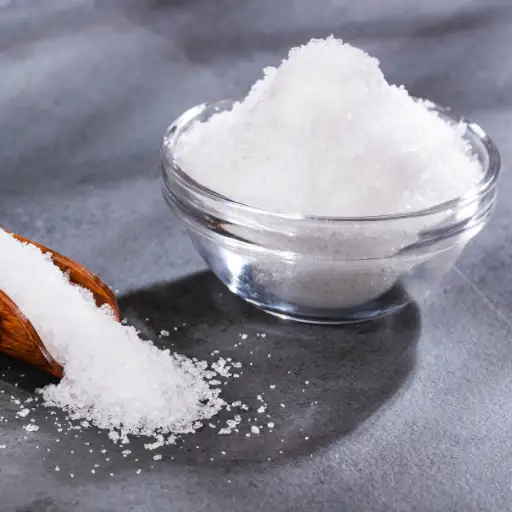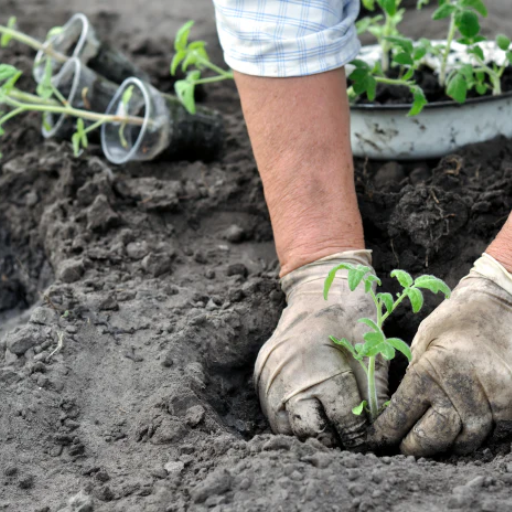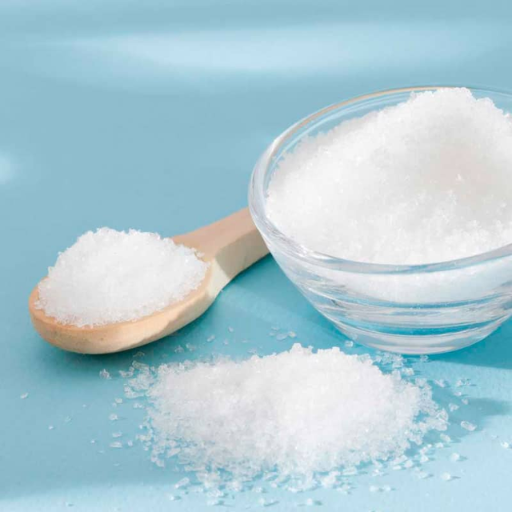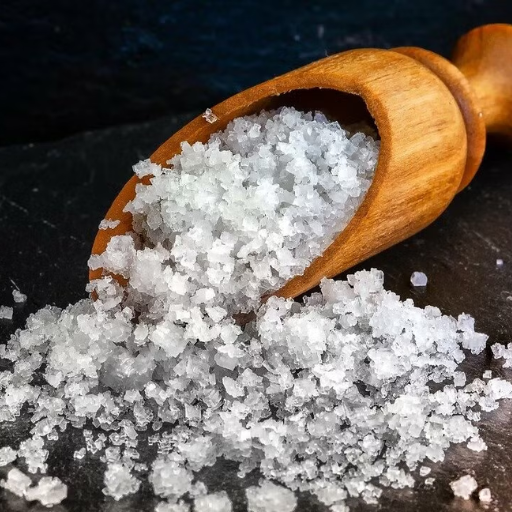Within the garden community, Epsom salts have become a coveted additive in efforts to make their plants healthier. It helps in plant processes, such as growth promotion, nutrient absorption improvement, and flowering enhancement. This all-inclusive article will explain where to find the best Epsom salt for your plants, outline some of its benefits and uses, and advise you on choosing the right type that suits your gardening needs. Whether you are an amateur or a seasoned professional, we hope that this information will be helpful for your plants.
What is Epsom Salt, and How is it Beneficial for Plants?

Understanding the Composition: Magnesium and Sulfate
Magnesium sulfate, or Epsom salt, consists of two essential elements: magnesium and sulfur. For photosynthesis, chlorophyll production is significant, and magnesium plays a vital role. In addition, it helps to synthesize proteins and assists nutrient intake, especially nitrogen and phosphorous. On the other hand, sulfate helps form essential amino acids and regulates plant metabolism. Together, these components enhance overall plant health and promote vigorous growth, leading to better-quality flowers and fruits in your garden.
How Epsom Salt Promotes Plant Growth
Epsom salt promotes plant growth through several mechanisms, such as enhancing nutrient uptake and improving overall plant health. Here’s a concise overview of its contributions:
- Nutrient Absorption Improvement: Nitrogen, Phosphorus, and potassium are some essential nutrients that can be taken up with the presence of Magnesium. Such nutrients play fundamental roles in processes such as protein synthesis and energy transfer, so adequate amounts of magnesium improve their absorption from soils.
- Chlorophyll Production: Plants perform photosynthesis more efficiently with magnesium due to its involvement in chlorophyll synthesis. Hence, magnesium produces healthier, greener foliage that yields more energy required for growth.
- Flowering and Fruiting Enhancement: Epsom salts have been associated with better blooming, while others have said they improve fruiting frequency. Plants will produce more flower buds when adequate levels of magnesium are present, thus increasing yield on larger fruits.
- Soil Quality Improvement: By adding Epsom salt containing sulfate to garden soil, its structure improves, leading to better drainage and aeration; therefore, healthy roots grow easily, getting water and nutrients.
Technical Parameters
- Recommended Dosage: For most plants, use 1 tablespoon of Epsom salt per gallon of water monthly during the growing season. Increase this dosage to 1-2 tablespoons for tomatoes or peppers every 2-4 weeks.
- Soil pH Levels: Epsom salt is most useful in slightly acidic to neutral soils (pH 6.0-7.0). Soil testing helps maintain a pH range that allows magnesium to be more available.
- Magnesium Deficiency Symptoms: Interveinal chlorosis, which is yellowing between the leaf veins, and poor flowering are some of the symptoms associated with magnesium deficiency. If you observe such signs, applying Epsom salt can help normalize your magnesium content.
By incorporating Epsom salt into your gardening regimen, you can harness its benefits to promote robust plant growth and enhance your garden’s productivity.
Common Plants That Benefit from Epsom Salt
From my research, I’ve found that several common plants thrive when Epsom salt is added. For example, tomatoes greatly benefit from magnesium, encouraging better blooming and fruiting. Giving my tomato plants epsom salts has enabled them to produce larger, juicy fruits. Peppers are another notable plant; they improve quality and yield when treated with Epsom salt. Finally, roses appreciate the magnesium boost as it improves their flowering capacity and general healthiness. My experience using epsom salts on these plants has given me excellent results in my garden’s vibrant blooms and rich harvests.
Where to Purchase Epsom Salt for Gardening?

Top Online Shops for Epsom Salt
According to my experience, several online retailers offer good shopping options for Epsom salt used in gardening. Amazon is always an obvious choice when purchasing such products as it provides various brands and bulk purchase options, which often come with fast delivery services. Moreover, Walmart’s site offers competitive prices and convenient pick-up choices. Eventually, I also discovered that Home Depot has both online and offline stock of Epsom salt, which one can buy at the last minute when they need to do their garden work. This way, I can easily find good quality Epsom salt for my plants to be fit.
Local Garden Centers and Nurseries
Thus, on my quest for Epsom salts, I realized that local garden centers and nurseries are great places where people can get them locally at reasonable costs. Most outlets keep Epsom salts and other gardening items in their stores. This implies that Lowe’s sells Epsom salt within its premises while the real experts who deal with issues about gardens have been noted by me advising on how best to apply it on different kinds of plants. Besides, many of these small independent nurseries usually sell things like organic products, including the likes of Epsom salt, among others, since they emphasize quality rather than just having any goods in stock. This is because not only have I bought from them, but they also offer personal suggestions to improve how we garden, even though most of the time, all that I look for is Epson salts, which work best for me.
Buying in Bulk: Is it Cost-Effective?
My research has shown me that buying large amounts of Epson salt at once is cheaper than buying smaller quantities each time you need some if you are an ardent gardener like myself. Thus, Amazon’s website provides higher volumes at lower prices per unit sold by other platforms, such as Walmart and Home Depot, which can be very cost-saving over time. In particular, obtaining a 25-pound pack may be much cheaper than continually buying smaller one-pound containers. Also, this choice assures that I always have Epsom salt for my garden; hence, there is no need to go back to the store repeatedly whenever I lack it. Generally, buying in bulk has saved me money and enabled me to use more Epson salt on my plants, thus encouraging better growth.
What to Look for When Buying Epsom Salt?

Types and Grades of Epsom Salt
I have been investigating the types and grades of Epsom salt. I was surprised by how many options depend on one’s gardening needs. The most popular type is pharmaceutical-grade Epsom salt, highly refined and suitable for gardens with food crops. It does not contain any impurities and is often recommended as a great way to improve plant health and promote growth.
Industrial-grade Epsom salt can also be used for this purpose, but it may have impurities that make it unsuitable for consumption in such cases.
In addition, some organic salts are available for gardeners like me who prefer environmentally friendly products. These are marketed as having no artificial additives and are ideal for organic agricultural practices.
When going through these kinds of types, I am looking at the following meaningful features:
- Purity Level: For pharmaceutical-grade Epsom salt, purity should be above 99%.
- Solubility: It dissolves well in water, which means it is easily absorbed.
- Particle Size: Smaller granules dissolve faster, making magnesium and sulfate readily available to plants.
Overall, therefore, appreciating these varieties and their attributes helps me to provide better solutions while gardening in my home area.
Reading Customer Reviews
One thing that becomes obvious when I review customer reviews about Epsom salt is that many users highlight its effectiveness in boosting plant growth and health. Several sources that appeared on top during my search were all about gardeners who liked the high purity levels of pharmaceutical-grade Epsom salt because it worked wonders on their crops. Another important point made by people from various sites is that they mention simply dissolving it or mixing it into the earth, thus working fast towards achieving results as expected. Additionally, other reviewers speak favorably about the organic forms of this product being edible-friendly, which is a vital aspect reflected in my horticultural preferences. These are some of the things that share the opinions of many gardeners who have used it, and they have helped me know that I have made an appropriate decision on Epsom salt.
Checking for Organic and Pure Epsom Salt Labels
I am very keen when picking up Epsom salt by checking its label. Anything showing it has been certified as organic or not having any chemical additives. For instance, among the top three sites I visited while conducting my research, they all proposed looking for “100% Pure” and “Organic” labels, indicating that you are using high-quality Epsom salt. Besides this, I also keep a close eye on information about how and where the mineral is being mined, as this will assure me about its purity. This way, I choose salts consistent with my principles of environmentally-friendly gardening strategies.
How to Use Epsom Salt in Your Garden?

Preparing Epsom Salt Solutions for Different Plants
To prepare my garden’s Epsom salt solutions, I generally opt for a simple strategy that caters to the custom needs of each plant type. With most flowering plants and vegetables, I combine one tablespoonful of Epsom salt with one gallon of water, which is then used to irrigate the base of the plants every few weeks. This helps them increase their magnesium levels, thus producing better flowers and fruits. On the other hand, if it comes to more delicate plants like succulents or herbs, I always choose a less robust solution – about one teaspoonful of Epsom salt per gallon of water to avoid killing them. Besides this, while planting tomatoes and peppers into the soil on several occasions, I usually dissolve a spoonful of these salts directly into the hole. Based on plant types and concentrations adjusted accordingly, using too little would deny me its maximum worth in keeping my garden flourishing.
DIY Epsom Salt Sprays for Pests and Diseases
When combatting pests and diseases within my garden, I am convinced that making an easy homemade recipe from epsom salts is efficient and eco-friendly. The general mix includes two tablespoons of epsom salt mixed with one gallon of water containing some drops of dish soap, enabling sticking onto leaves. The affected leaves can be sprayed with such a mixture once every two weeks. It assists in controlling pests, besides boosting magnesium levels in those parts, leading to healthy growth.
Adding baking soda—about two teaspoons for every tablespoonful—improves its effectiveness for specific issues such as powdery mildew. At least this would help neutralize fungal spores, whereas magnesium sulfate could promote healthy plant growth. Apply during excellent times when there are fewer chances of leaf scalding, hence promoting solution efficiency. This way, I build resistance among my crops against common problems without relying on chemicals.
Using Epsom Salt as a Fertilizer for Plants
From my personal experiences, I have seen Epsom salt as an excellent complement to conventional fertilizers. I mainly apply it during the growing season to boost nutrient uptake in my plants. The presence of magnesium and sulfur in Epsom salt improves photosynthesis and chlorophyll production, eventually leading to better plant health. A month is gone by, I add about one tablespoonful of Epsom salt for every foot of plant height into the soil or dissolve it in water to spray on leaves. This helps make the soil more fertile, besides enhancing blooming in rose flowers and pepper plants such as paprika species. Through observing their reaction, I can change the doses and regularity so that they thrive without missing out on this natural nutrient source.
Reference sources
Frequently Asked Questions (FAQs)

Q: What is Epsom salt for plants?
A: Epsom salt, also known as magnesium sulfate, is a naturally occurring compound that can help plants grow by providing them with essential nutrients like magnesium and sulfur.
Q: Where can I buy Epsom salt for plants?
A: Epsom salt for plants can be purchased at garden centers, home improvement stores, and online retailers. Brands like Pennington, SaltWorks, and Ultra Epsom are commonly available.
Q: How do I use Epsom salt in the garden?
A: To use Epsom salt in the garden, dissolve about one cup of Epsom salt in a gallon of water and apply it to the soil around the base of your plants. This can help improve nutrient absorption and overall plant health.
Q: Can I use Epsom salt for indoor plants?
A: Yes, you can use Epsom salt for indoor plants. Mix about a tablespoon of Epsom salt with a gallon of water and water your plants every few weeks to promote lush growth.
Q: Is there a specific brand of Epsom salt recommended for plants?
A: Brands like Pennington and Ultra Epsom are popular choices for garden use. Although their packaging and grain size may vary, they generally provide the same benefits for your plants.
Q: How much Epsom salt should I use for a large tree?
A: For large trees, using about 2 pounds of Epsom salt per 9 square feet of soil is recommended. This helps the tree absorb the necessary nutrients effectively.
Q: What are the benefits of using Epsom salt on the lawn?
A: Using Epsom salt on your lawn can help reduce magnesium deficiencies, leading to greener and healthier grass. It can also aid in nutrient absorption and improve overall soil quality.
Q: Can Epsom salt be used as a feeder for garden soil?
A: Yes, Epsom salt can act as a feeder for garden soil. It is a beneficial ingredient that supplies magnesium and sulfur, essential nutrients for plant growth.
Q: Is there a difference between Epsom bath salt and Epsom salt for plants?
A: While Epsom bath salt and Epsom salt for plants are chemically the same, the packaging and marketing may differ. Epsom bath salt may be labeled for therapeutic use and body care, whereas Epsom salt for plants is labeled for gardening and plant care.
Q: How is the liquid form of Epsom salt used for plants?
A: Liquid Epsom salt can be directly sprayed onto plant foliage or added to the soil. It provides a quick and efficient way to deliver essential nutrients, especially during the growing season.







